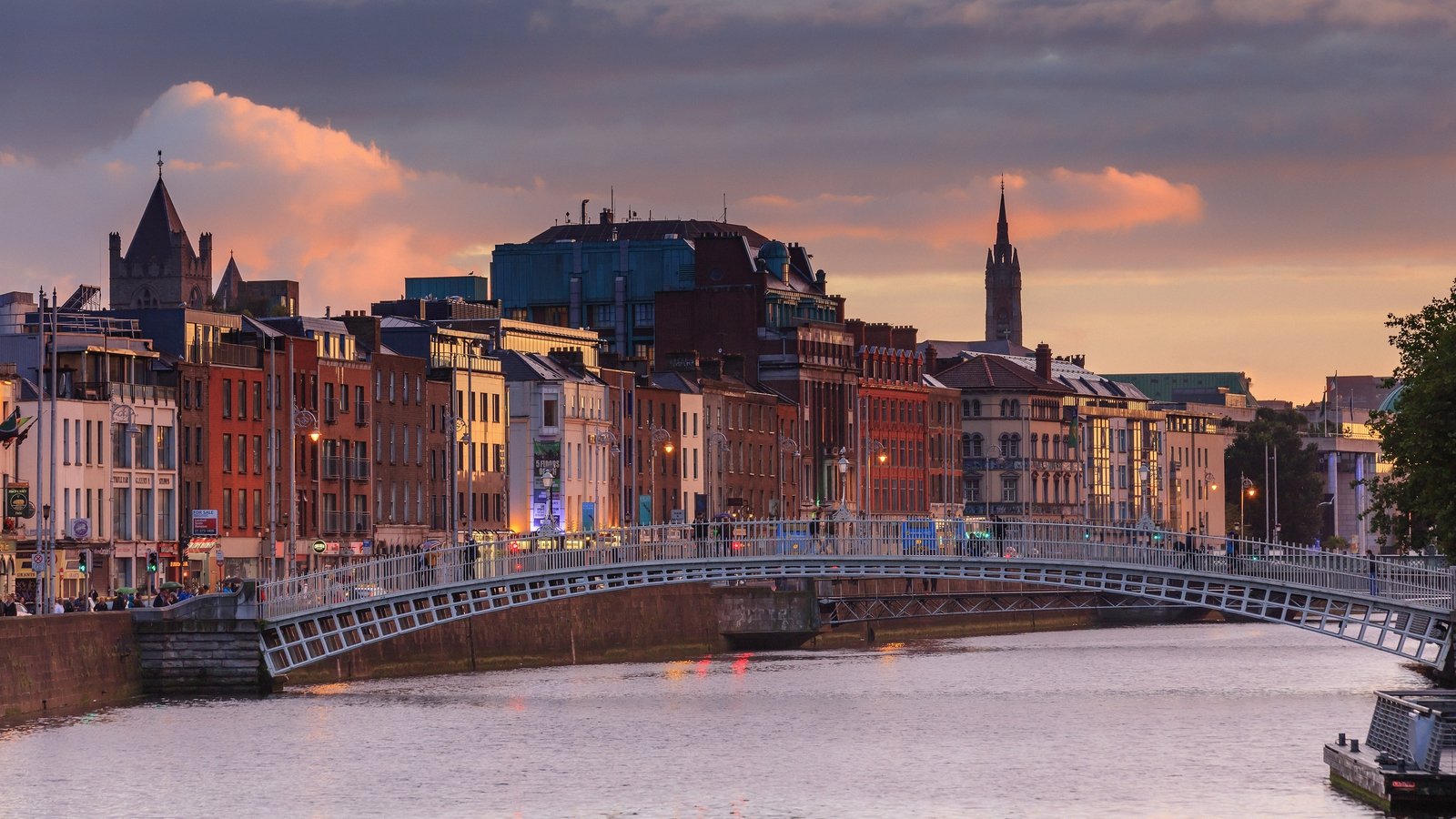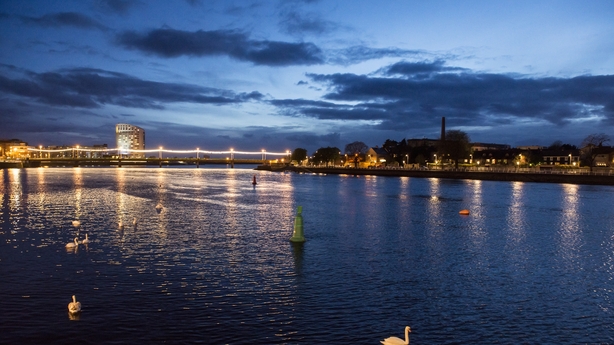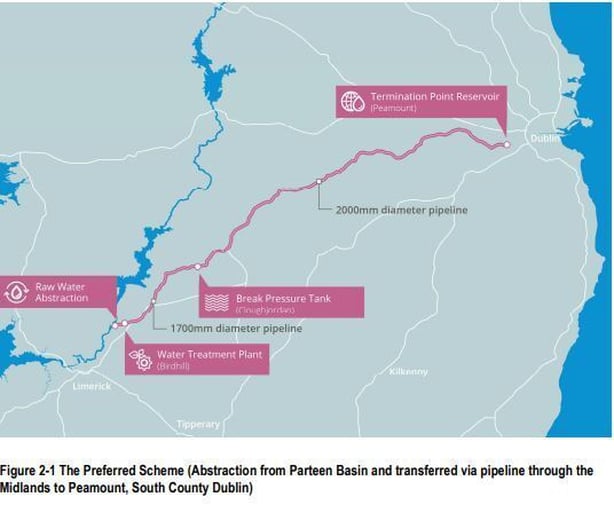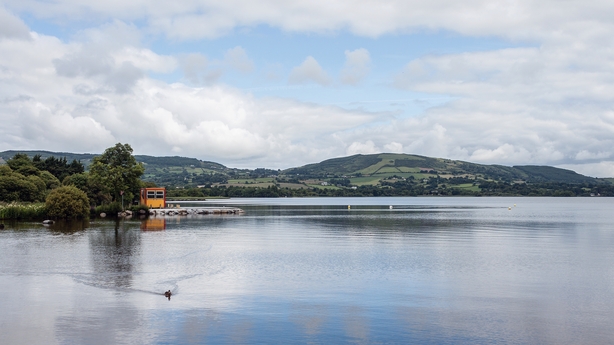Fast action needed amid pressure on water supplies

The fact that people in the greater Dublin region were asked to conserve water during January just gone, in the middle of the winter, at the height of the rainy season, highlights the extent to which the situation regarding water supply in the capital is on a knife-edge.
If the situation is that bad in the winter, what is it going to be like during the summer this year?
Are we heading for hosepipe bans, water supply restrictions, nighttime shut offs and conservation appeals?
And even if we were to escape all that this year, it is likely to be a constant threat every year for the foreseeable future.
Uisce Éireann says the maximum sustainable supply of water for the Greater Dublin Area is 600 million litres per day.
This amount was not exceeded on any day during 2019. Since then, however, as the economy and population have both expanded the demand for water has shot up.
Daily water demand exceeded that 600 million on 80 days last year. The same happened on at least 23 out of the first 25 days of this year.
In January, daily demand actually hit 636 million litres, a record high.
Uisce Éireann has pointed out that the increase in demand for water in the Greater Dublin Area last year was equivalent to the addition of 120,000 new homes.
When one considers that 85% of Dublin’s water comes from a single source – the River Liffey – water supplies in the east are clearly under enormous pressure.
Uisce Éireann is already taking 40% of the entire flow of water in the Liffey.
It is not sustainable to take any more and yet what they are taking is not enough to satisfy demand.
As we enter the dryer summer period, the pressure on water supplies is likely to increase.
People have been arguing about what to do about this situation for 25 years.
But we are clearly at a point now where decisions need to be taken and action needs to be put in place, fast.
Piping from Shannon

The Water Supply Project – Eastern and Midlands Region is the technical name Uisce Éireann has given its plans to take water from the Shannon and pipe it to the midlands and the east of the country, especially to Dublin.
The water authorities have been searching for a solution for 25 years. They claim to have looked at more than 100 options for the Greater Dublin Area, and nearly 1,000 options for all of the other areas in the eastern and midlands region.
Their conclusion is that piping water from the lower Shannon is the best, most efficient, most sustainable, and least environmentally damaging solution to the issue.
It is also the solution that will benefit the greatest number of people.
Their proposal is to abstract about 2% of the average flow of the River Shannon at the Parteen Basin, downstream of Lough Derg, and pipe it to a massive new water treatment plant a short distance away at Birdhill in Co Tipperary.
It will then be pumped for the first 40km to Cloughjordan, also in Co Tipperary, and from there flow by gravity another 132km to a termination reservoir at Peamount in Co Dublin.

It will serve communities along the route in Newport, Killaloe, Dunkerrin, Moneygall, and Borrisokane in north of Co Tipperary, Tullamore in Co Offaly and Mullingar in Co Westmeath.
A large range of towns and communities as far north as Drogheda and Navan, and as far south as Arklow, Carlow, and Portlaoise would benefit too.
In some cases, the expected benefits arise not from the 36 new offshoot spurs and local connections to the main water pipeline, but instead from the redirection of regional water supplies.
For instance, in Co Wicklow, water that was previously piped to the Greater Dublin Area could be freed up and redirected more locally.
Objections to plan

Uisce Éireann says that this project, if it gets the go-ahead, will deliver the first new water source in the region in 60 years.
It would create a new interconnected water network to support people, housing, and economic growth for 50% of the State’s population.
Not everyone is in favour of the proposal, however.
The River Shannon Protection Alliance (RSPA) is dedicated to ensuring it does not happen.
It argues that it is an unnecessary project and that there are better and far cheaper alternatives.
Donal Whelan is a Director and Treasurer of the RSPA and lives right on the shoreline of Lough Derg at Dromineer in Co Tipperary.
He claims the project started out costing an estimated €700 million, but is now up to about €1.6 billion before it has even started.
According to him, it could end up like the National Children’s Hospital in Dublin, costing the State a total fortune that does not need to be spent.
“There are alternative sources of water much closer to Dublin in the Kildare area, even underground water,” he said.
“The Slaney River is 20km from the Dublin region. Yet they are proposing to pipe water 172km and through 500 farms. It is crazy idea really.”
Mr Whelan says all they need to do is create another reservoir or two in the Wicklow area.
Mr Whelan is also concerned because Uisce Éireann will also install a second water pipe as a backup in case something goes wrong.
He says this raises a worry that at some future date Uisce Éireann could increase the amount of water it takes from the Parteen basin.
The Shannon River Protection Alliance argues that the solution to Dublin’s water supply issue lies in fixing the water pipes that are leaking in the capital and preventing the loss of millions of litres of clean water every day.
“The concentration should be on fixing the leaks and possibly charging for water. The couple of months when they did charge for water, the Dublin demand fell by 20%,” Mr Whelan said.
“If people have to pay for it, they won’t waste it.
“I think dropping the water charges was very bad. People don’t appreciate something unless they have to pay for it.”
Shannon a sustainable supply

Nevertheless, Uisce Éireann’s Asset Strategy Manager Angela Ryan says the utility is constantly refurbishing existing water treatment plants, bringing on small new water supplies, reducing leakage and encouraging people to use less water.
But she insists that we have reached a point where a permanent and new water supply for the region is badly needed.
She says the Shannon covers 20% of the landmass of Ireland and so is a very, very sustainable supply that could bring a generational change to water supplies in Ireland.
She also believes that the project could possibly be delivered in about eight years once it gets the go-ahead from Government.
“We have already had negotiations with landowners along the proposed pipeline route,” Ms Ryan said.
“Potentially there are about 500 landowners. We have had about 20 to 25 contacts with each of them. So, we have done a lot of the initial enabling work required for landowners’ agreements.”
Ms Ryan said that the next step is going through the statutory planning phases for the project, which she said could take up to two years.
“After that, we could probably build out the project within five or six years”, she said.
“We looked at all of the options within the region. We have done groundwater assessments. We have done hydrological assessments. We have examined all surface water bodies, including the River Barrow,” she added.
“But the level of water we need is just not there in the eastern midlands of the country at present, and the shortage will get worse in the future.”
‘Water situation on knife-edge’
That reference to the situation about to get much worse in the future is something Professor Conor Murphy, a climate scientist at Maynooth University, has been warning about for some time.
“If you look at the Greater Dublin Area, where 1.7 million people are relying on a precarious water supply, we are not really capable of dealing with climate variability, not to mention future climate change,” he said.
“If we look back to the 1970s, 1930s or into the late 1900s, there were very big drought events. If that were to reoccur it would really push our Capital city past a tipping point.
“The water situation is really on a knife-edge. Climate change means we expect summers in the future to become drier.
“We are looking at an average of 20% reduction in rainfall in the eastern region of the country. That is going to translate into about a 40% reduction in river flows during the summer. And on top of that we will have droughts as well.
“There really is a pinch point here now and we need to get to grips with it.”





